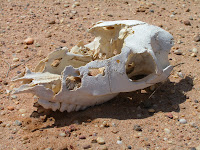The scene seems lifted from a Gabriel Garcia Marquez novel: we’ve just been introduced to an inebriated 91-year old Wayuu tribesman, and he is adamant we get a photo with him. We are at our hosts’ home in Nazareth, a town in the Guajira peninsula, the northernmost part of South America. The man- whose name we don’t catch- never stops smiling or rubbing his belly while he talks to us. He is dressed in a breechcloth and shirt, with two of the buttons done up in a nod towards covering himself. After a short conversation, and repeated handshakes, he sets off as abruptly as he had shown up, and our bout of magico realismo is over.
Even for a country that receives few visitors, Guajira is off the beaten track. A desert region with a high indigenous population (mostly Wayuu), it is stricken by poverty. Worse still, until 2004 it was plagued by guerilla and paramilitary violence.
Our friends Dan and Emma, however, insisted that we should go, and since Dan is Colombian we assumed it would be all right. We set up our tour in the unremarkable town of Riohacha; the next morning we, along with our driver and guide Felipe, were ready to set off in our 4x4.
We spent our first night in Cabo de la Vela, the only recognised tourist destination in Guajira. Cabo is a hamlet strung along a golden beach, but the coast surrounding it is the real draw. Strewn with rocky cliffs and coves, the highlight is the pyramidal Pilon de Azucar (Sugar Pile). It took about twenty minutes to walk to the top, and then I was looking directly below to the green sea, with the desert outline of Guajira stretching out for miles.
The next morning we were up early again, heading east. Shortly after leaving Cabo, the road ended, and we were travelling on bumpy tracks, which meandered through the rough desert terrain. Felipe informed us it was easy to drift into Venezuela without noticing.
That morning we stopped at an isolated beach where the layers of uninterrupted shells made it easier to imagine dinosaurs lazing around than humans. We dashed into the murky turquoise water, but were soon running back out. Three of us had been stung by jellyfish, so we decided to admire the scene from ashore. Afterwards we drove to a small house that seemed to emerge from cactus and sand, and we enjoyed a fantastic lunch of fresh fish and patacones- sliced fried bananas.
 |
| This restaurant didn't seem to spend a lot on advertising |
Hours later, we arrived in Nazareth. Nearby is the Parque Nacional Macuira, an incongruous island of cloud forest that literally rises up from the sandy desert. What really made Nazareth special, though, were our Wayuu hosts. They introduced us to friends as if we were invited guests, and their adorable toddlers provided endless entertainment.We were even invited to a local Wayuu fiesta, but they later decided that some of the tribesmen were too drunk, and there could be potential problems. We were disappointed, but given our interaction with the old chief earlier that morning, it wasn't that surprising.
 |
| Our host family is ready for the local celebration |
Our last stop was Punta Gallinas, the northernmost tip of South America. Sand dunes towered above the sea, punctuated occasionally by small green oases, where goats were feeding. There were no other living things in sight. We came across the skull of one goat that must have lost his way. We prepared for the long journey back to Riohacha, soaking up the last bit of magico guajirano.

















